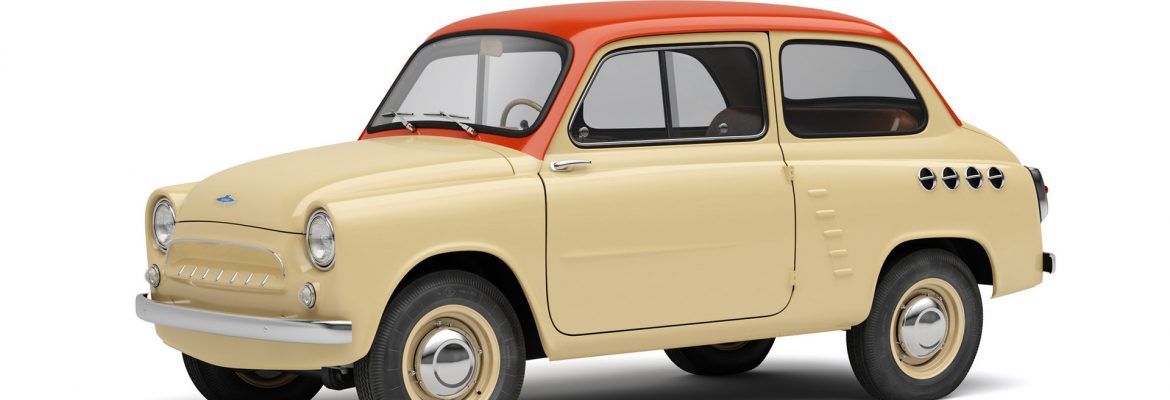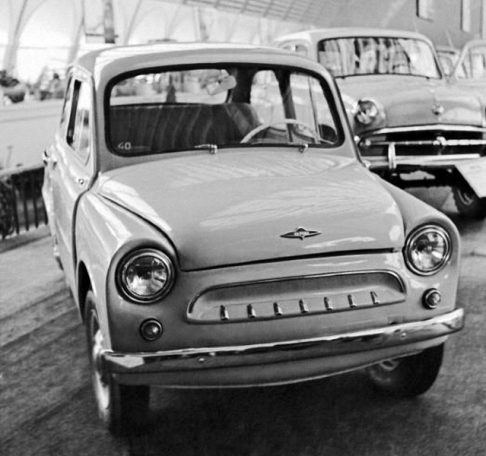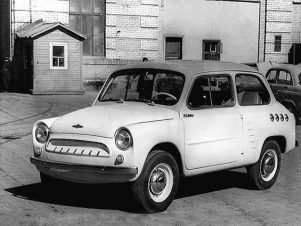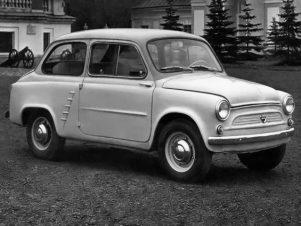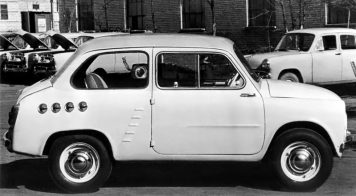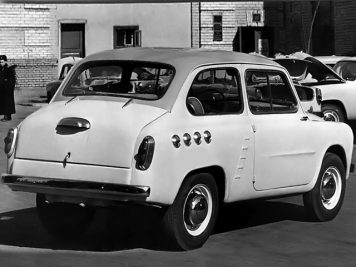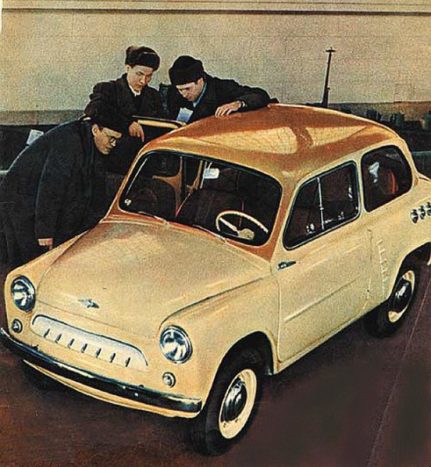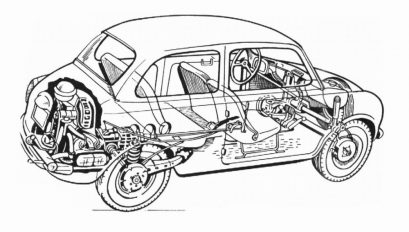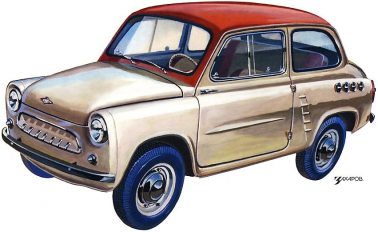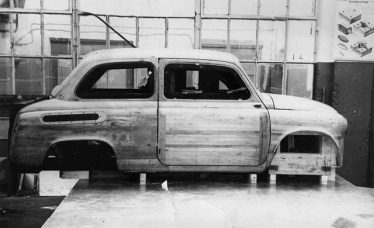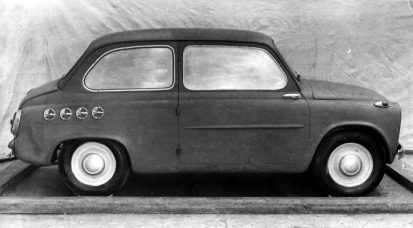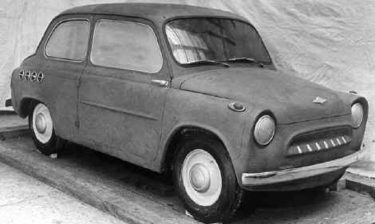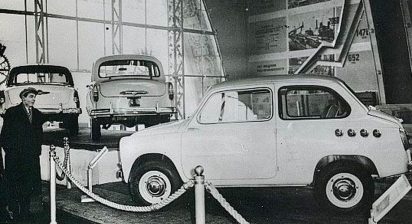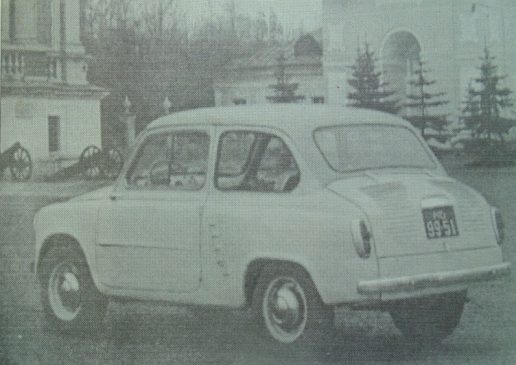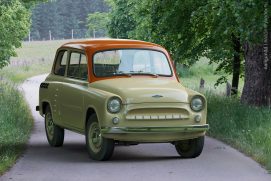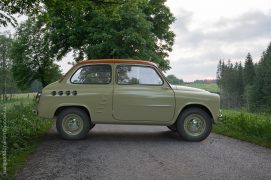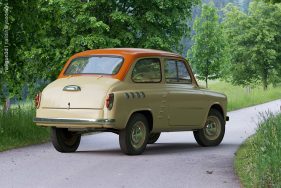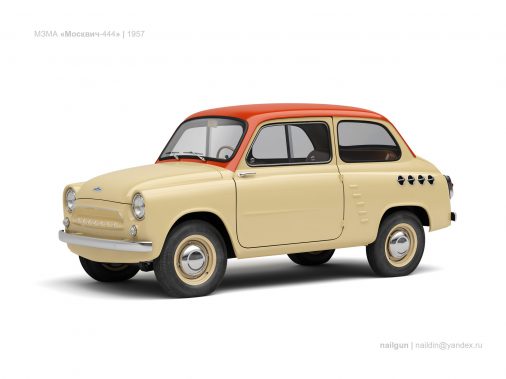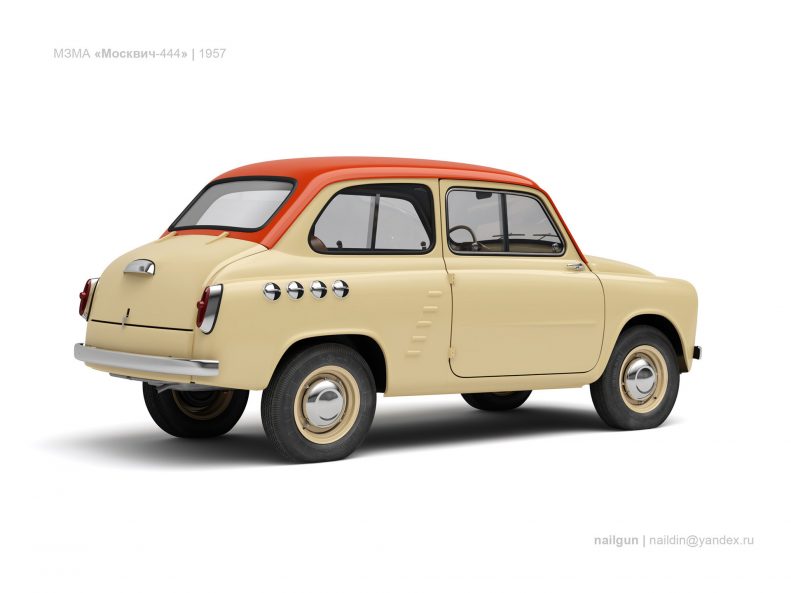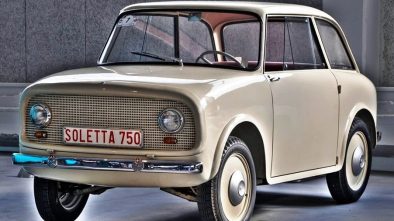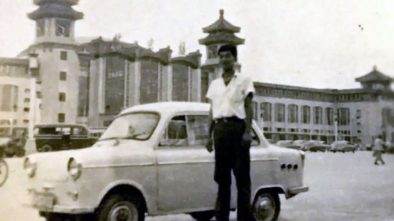Moskvich-444
The name “Moskvich-444” probably will not say anything to you. But when you look at the photos there will be no doubt: this is Soviet-built “Zaporozhets”! This two-door sedan became the first car for many Soviet families. “Moskvich-444” is a pre-production prototype of the future “Zaporozhets”.
Of course, at first no one expected that the small “Moskvich” would be produced in Ukraine: the Moscow “Moskvich” needed a compact car, which would take the place of the retired “Moskvich 401” — a simple and cheap, but hopelessly outdated model. The new model “Moskvich-402” turned out to be too expensive. The country required cheaper models.
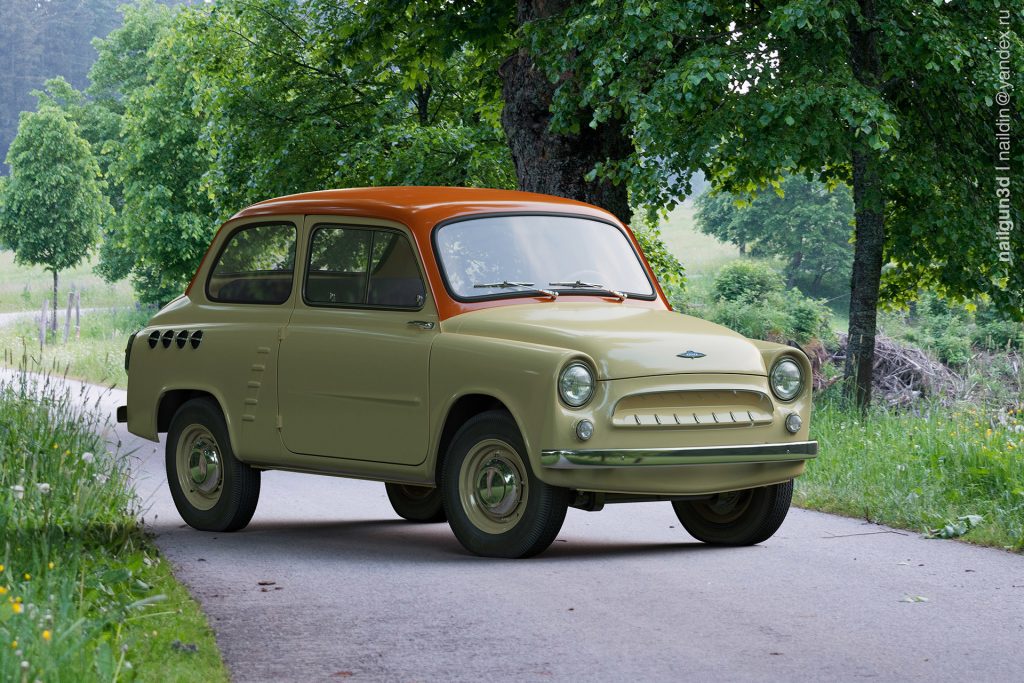
Designers tried to make “Moskvich-444” as the link between a motorcycle and car. But they simply could not find a compact engine, and the designers had to choose a two-cylinder 17.5-horsepower 649 cc motorcycle engine. This was not enough for the car with a full mass of about a ton!
Also, the government “advised” to create the new minicar based on the Italian Fiat 600. However, the Soviet copy was different from the Italian car. Firstly, 12-inch wheels were replaced with 13-inch ones. This decision turned into a disaster — the designers had to redraw the underbody, change the suspension kinematics, etc. Secondly, the design was redrawn a bit: the silhouette took on the famous “humpback”, the front end got a distinctive stamping, and the windshield and rear windows became… interchangeable. The designers also redesigned the gearbox — the steel mills of the USSR could not provide metal of such quality that it was available to Italians.

In October 1957, the first prototype was made, which finally proved: the motorcycle engine should be replaced.
“Sluggish acceleration and shortage of maximum speed — only 80 km/h instead of planned 95 km/h,” the testers concluded. “The engine resource before overhaul is not more than 30 thousand kilometers.
What to do? Moscow designers finally decided to create their own motor for the car, similar to that installed on the Citroen 2CV: air-cooled, boxer, with a working volume of 748cc. But the work dragged on…

And then the fun began. When the car was almost finished, development of the engine was still in progress. The plant’s leadership admits that “it does not have sufficient capacity to produce a microcar”. In simple terms, they can’t start producing of “Moskvich-444”. Fortunately, both problems were solved unexpectedly quickly: the Council of Ministers of the USSR issued a decree “On the organization of production of small cars”, and NAMI (Russian Automotive Institute) provided their own developments — the NAMI-965G boxer engine (actually a copy of the VW Bug engine) and the V-shaped NAMI-965B engine. The latter was chosen for the mass-production.

The car was approved, the technical documentation and prototypes of “Moskvich-444” were handed over to the Ukrainian Kommunar plant, an enterprise where headers, threshing machines, tractors and other equipment for agriculture were produced. And where “Moskvich-444” from the prototype was turned into a mass-production “Zaporozhets-965”.
